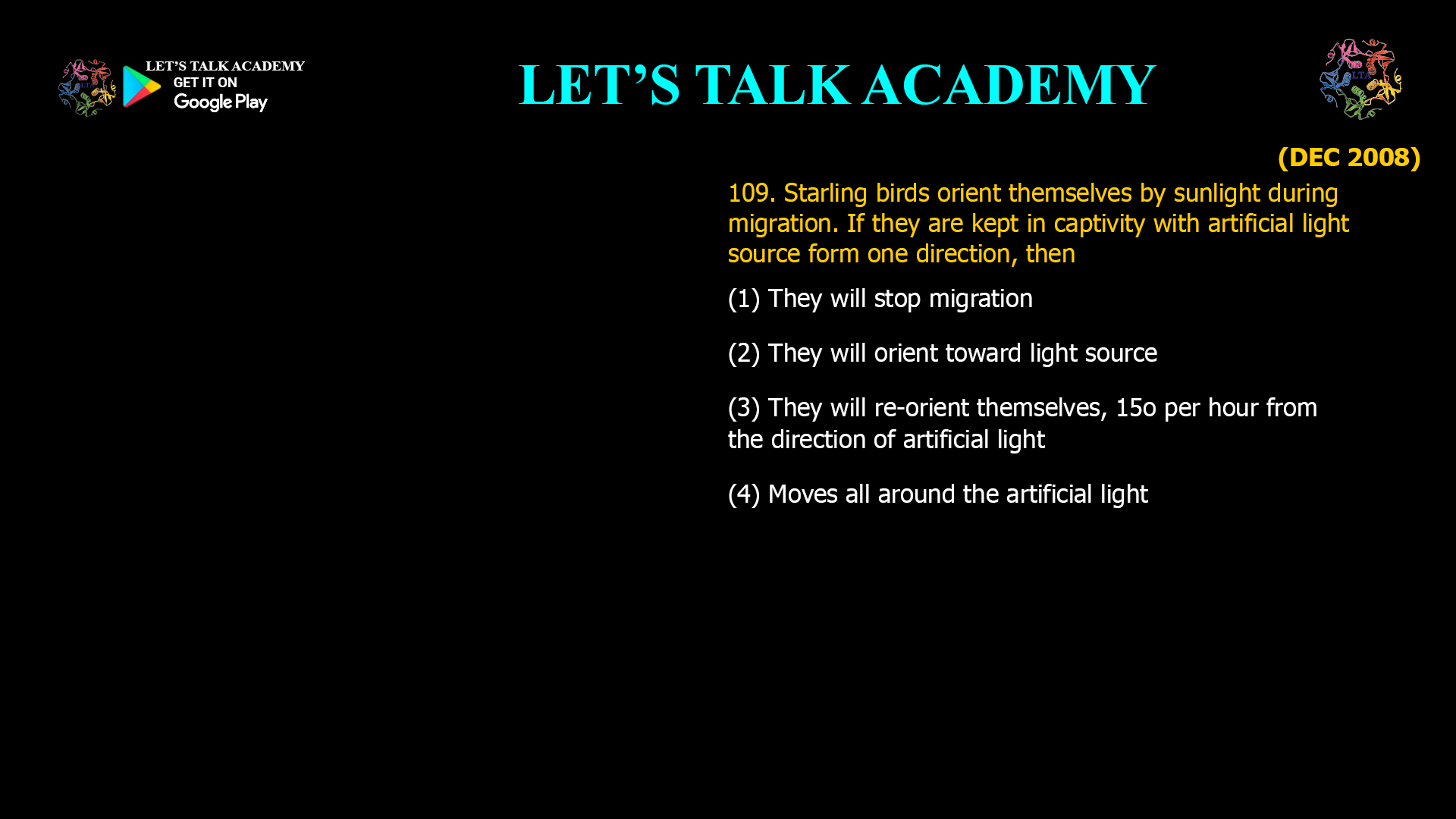- Starling birds orient themselves by sunlight during migration. If they are kept in captivity with artificial light source form one direction, then
(1) They will stop migration
(2) They will orient toward light source
(3) They will re-orient themselves, 15o per hour from the direction of artificial light
(4) Moves all around the artificial lightThe Sun Compass and Bird Orientation
Starlings and many other diurnal migrants use the position of the sun in the sky as a reliable directional cue. This “solar compass” is so deeply ingrained that birds adjust their migratory path according to the sun’s position at any given time of day. Their internal biological clocks help them compensate for the sun’s movement, ensuring accurate orientation throughout the day.
Experimental Evidence: Artificial Light in Captivity
When starlings are placed in orientation cages and exposed to an artificial light source that mimics the sun, they exhibit a striking behavior: they orient themselves toward the artificial light source. This response has been demonstrated in classic experiments by Gustav Kramer and others, where the direction of the birds’ migratory restlessness (or “zugunruhe”) shifts in direct correspondence with the manipulated position of the artificial sun.
“Starlings kept in orientation cages took the appropriate direction at the time of migration departure and this direction changed when the operator changed the origin of the light source simulating sunlight using a mirror.”
This finding confirms that starlings rely on the perceived position of the sun—real or artificial—for directional guidance. When the light source is moved, the birds reorient accordingly, demonstrating the flexibility and adaptability of their navigational system.
Why Not the Other Options?
-
Stopping migration: Starlings do not stop their migratory behavior when exposed to artificial light; they continue to exhibit orientation behaviors.
-
Re-orienting 15° per hour: This refers to compensation for the sun’s movement in the sky, but with a fixed artificial light source, birds simply orient to that source.
-
Moving all around the light: Birds do not move randomly; their orientation is purposeful and directed toward the light source.
Conclusion
When starlings are kept in captivity with an artificial light source from one direction, they will orient toward the light source. This behavior highlights the importance of solar cues in avian navigation and demonstrates how birds can adapt their orientation to artificial environmental signals
-




1 Comment
Kajal
October 12, 2025Orient towards artificial source